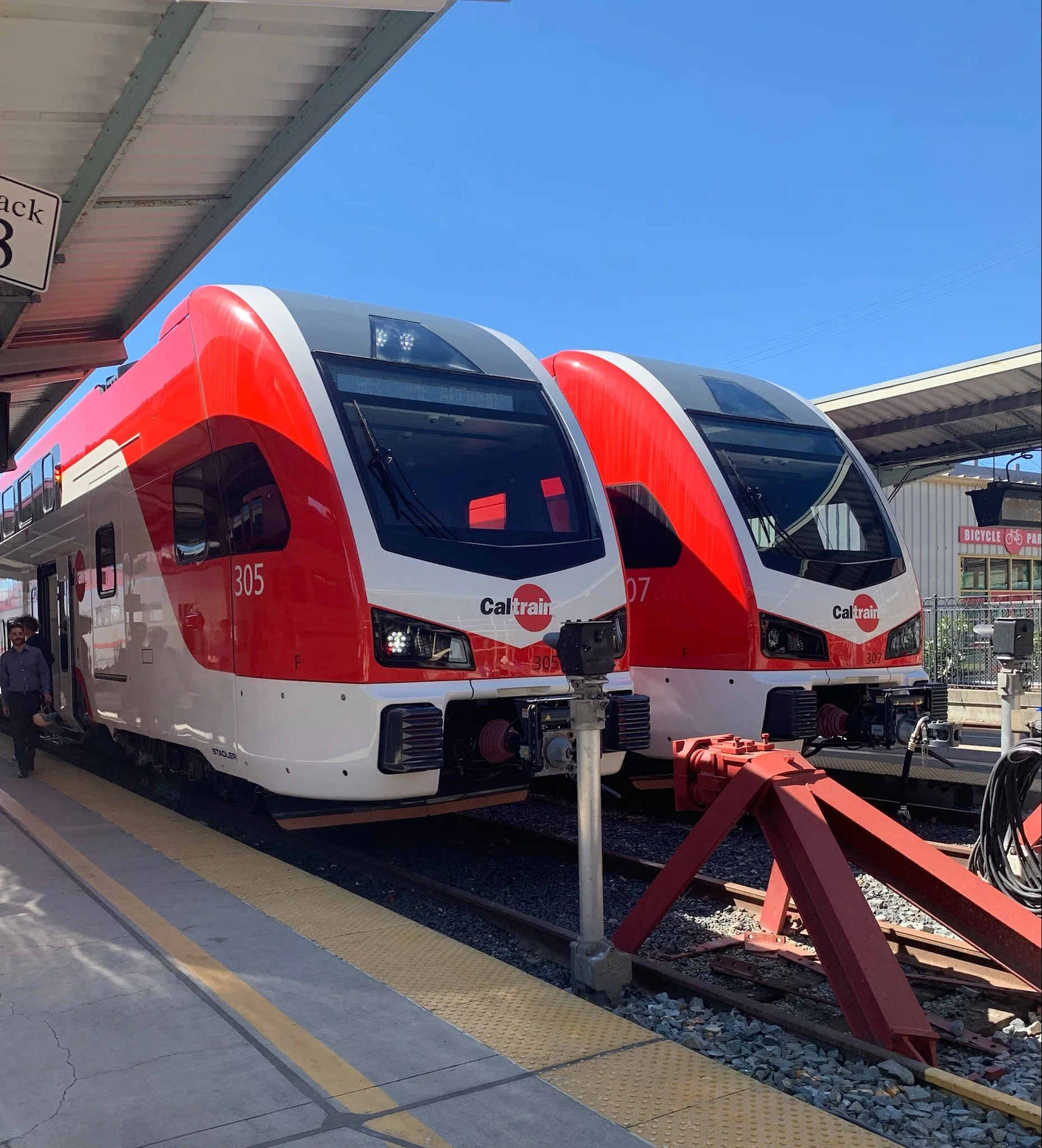Caltrain Electrification Nears Completion
Annika Larson | alarson23@dtechhs.org
Two new electric train sets on display at Caltrain's San Francisco Terminus. Image courtesy of Caltrain
The electrification of Caltrain, the commuter rail service on the Peninsula, continues to progress. In July, electric trains were tested for clearance on the Caltrain tracks. One of the new electric trains was pulled along the tracks between Santa Clara and Tamien stations to ensure that it could safely travel along that section of track. The plan is for electric trains to eventually run along the majority of the Caltrain system; currently, all tracks north of Tamien Station in San Jose are scheduled to be electrified.
d.tech students welcome electrification: a majority of students who ride the train to school feel positively about the project, and only one respondent to our form felt negatively. Sophomore Aneesh Ahuja hoped that electrification would make Caltrain more reliable, while freshman Jaylen Amlani noted the benefits in reducing pollution, saying that they were “so excited to have trains that don't constantly cough up black smoke … and pollute the air.”
According to Caltrain, the new electric trains will be faster, safer, and more environmentally friendly. Electric trains will also be able to run more frequently—up to six times per hour! Right now, Caltrain’s locomotives run on diesel fuel, the combustion of which produces the greenhouse gas carbon dioxide. Currently, the electrification project is scheduled for completion in 2024 in spite of past delays. As of December 2021, the project had an estimated cost of $2.4 billion.
Almost all trains operated by Bay Area Rapid Transit (BART), a train service in the East Bay, San Francisco, and the northernmost parts of San Mateo County, already run on electricity. Caltrain’s planned electrification will bring its propulsion technology in line with BART as well as commuter rail systems in Denver, Boston, and London, among other places.
The electrification process will also allow for high-speed rail to run through the area as part of the planned California high speed rail project. The project aims to connect Los Angeles and San Francisco by passenger rail, with a one-way trip taking less than three hours. However, the project has been criticized for its high costs: although it was originally estimated to cost $33 billion, the high-speed rail system is now projected to cost between $69 billion and $99 billion.


